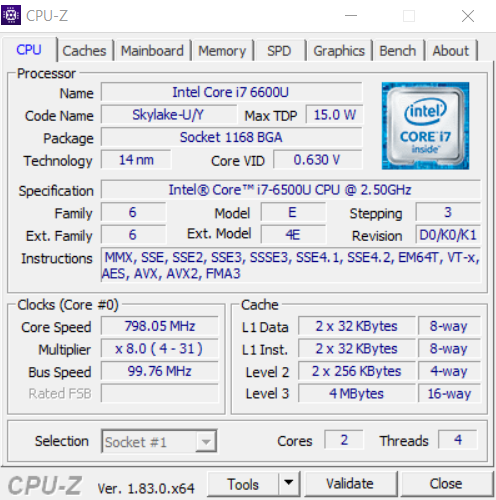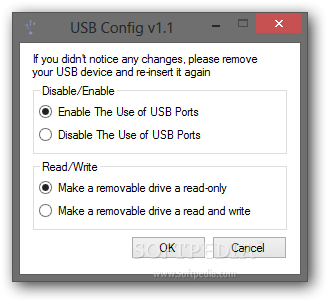FTDI USB Serial Port driver is the software that helps your operating system to communicate with USB Serial Port devices. Get the latest driver Please enter your product details to view the latest driver information for your system.
- Usb Config Port Devices Driver Free
- Usb Config Port Devices Driver Download
- Usb Config Port Devices Driver Windows 10
This topic is intended for OEMs who want to build a Windows 10 system with USB Type-C connector and want to leverage OS features that allow for faster charging, power delivery, dual role, alternate modes, and error notifications through Billboard devices.
A traditional USB connection uses a cable with a USB A and USB B connector on each end. The USB A connector always plugs in to the host side and the USB B connector connects the function side, which is a device (phone) or peripheral (mouse, keyboard). By using those connectors, you can only connect a host to a function; never a host to another host or a function to another function. The host is the power source provider and the function consumes power from the host.

- The topics in this section describe the typical requests that a client driver can send and the device driver interfaces (DDIs) that the client driver must call to create those requests. Developer audience. A client driver for a USB device is a WDF or WDM driver that communicates with the device through DDIs exposed by the USB driver stack.
- Virtual COM port (VCP) drivers cause the USB device to appear as an additional COM port available to the PC. Application software can access the USB device in the This page contains the VCP drivers currently available for FTDI devices. For D2XX Direct drivers, please click here.
- Welcome to the NETGEAR Download Center!! To find documentation, firmware, software, or other files, enter a whole or partial Model number in the text search box.
- 00001 /. Name: usbconfig.h 00002. Project: AVR USB driver 00003. Author. (which is 00018 also hardware interrupt 0 on many devices) and USB D- to Port D bit 4.
The traditional configuration limits some scenarios. For example, if a mobile device wants to connect to a peripheral, the device must act as the host and deliver power to the connected device.
The USB Type-C connector, introduced by the USB-IF, defined in the USB 3.1 specification, addresses those limitations. Windows 10 introduces native support for those features.
Feature summary
- Allows for faster charging up to 100W with Power Delivery over USB Type-C.
- Single connector for both USB Hosts and USB Devices.
- Can switch USB roles to support a USB host or device.
- Can switch power roles between sourcing and sinking power.
- Supports other protocols like DisplayPort and Thunderbolt over USB Type-C.
- Introduces USB Billboard device class to provide error notifications for Alternate Modes.
Official specifications
Hardware design
USB Type-C connector is reversible and symmetric.
The main component are: the USB Type-C connector and its port or PD controller that manages the CC pin logic for the connector. Such systems typically have a dual-role controller that can swap the USB role from host to function. It has Display-Out module that allows video signal to be transmitted over USB. Optionally it can support BC1.2 charger detection.
Consider recommendations for the design and development of USB components, including minimum hardware requirements, Windows Hardware Compatibility Program requirements, and other recommendations that build on those requirements.Hardware component guidelines USB
Choose a driver model
Use this flow chart to determine a solution for your USB Type-C system.
| If your system... | Recommended solution... |
|---|---|
| Does not implement PD state machines | Write a client driver to the UcmTcpciCx class extension. Write a USB Type-C port controller driver |
| Implements PD state machines in hardware or firmware and support USB Type-C Connector System Software Interface (UCSI) over ACPI | Load the Microsoft provided in-box drivers, UcmUcsiCx.sys and UcmUcsiAcpiClient.sys. See UCSI driver. |
| Implements PD state machines in hardware or firmware, but either does not support UCSI, or support UCSI but requires a transport other than ACPI | Write a client driver for the UcmCx class extension. Write a USB Type-C connector driver Write a USB Type-C Policy Manager client driver |
| Implements UCSI but requires a transport other than ACPI | Write a client driver to the UcmUcsiCx class extension. Use this sample template and modify it based on a transport that your hardware uses. Write a UCSI client driver |
Bring up drivers
USB Function driver bring-up is only required if you support USB Function mode. If you previously implemented a USB Function driver for a USB micro-B connector, describe the appropriate connectors as USB Type-C in the ACPI tables for the USB Function driver to continue working.
For more information, see instructions about writing a USB Function driver.
USB Role-Switch driver bring-up is only required for devices that have a Dual Role controller that assumes both Host and Function roles. To bring-up the USB Role-Switch driver, you need to modify the ACPI tables to enable the Microsoft in-box USB role-switch driver.
For more information, see the guidance for bringing up the USB Role Switch Driver.
A USB Connector Manager Driver is required for Windows to manage the USB Type-C ports on a system. The bring-up tasks for a USB Connector Manager driver depend on the driver that you choose for the USB Type-C ports: The Microsoft in-box UCSI (UcmUcsiCx.sys and UcmUcsiAcpiClient.sys) driver, a UcmCx client driver, or a UcmTcpciCx client driver. For more information, see the links in the preceding section that describe how to choose the right solution for your USB Type-C system.

Test
Usb Config Port Devices Driver Free
Perform various functional and stress tests on systems and devices that expose a USB Type-C connector.
Test USB Type-C systems with USB Type-C ConnEx - Run USB tests included in the Windows Hardware Lab Kit (HLK) for Windows 10.
Run USB function HLK tests with a C-to-A cable (search for Windows USB Device in the HLK
Certification/ComplianceAttend Power Delivery and USB Type-C compliance workshops hosted by the standards bodies.
See also
-->The topics in this section describe how a client driver must configure their device.
A USB device exposes its capabilities in the form of a series of interfaces called a USB configuration. Each interface consists of one or more alternate settings, and each alternate setting is made up of a set of endpoints. The device must provide at least one configuration, but it can provide multiple configurations that are mutually exclusive definitions of what the device can do. For more information about configuration descriptors, see USB Configuration Descriptors.
Device configuration refers to the tasks that the client driver performs to select a USB configuration and an alternate interface in each interface. Before sending I/O requests to the device, a client driver must read the device's configuration, parse the information, and select an appropriate configuration. The client driver must select at least one of the supported configurations in order to make the device to work.
A WDM-based client driver can select any of the configurations in a USB device.
If your client driver is based on Kernel-Mode Driver Framework or User-Mode Driver Framework, you should use the respective framework interfaces for configuring a USB device. If you are using the USB templates that are provided with Microsoft Visual Studio Professional 2012, the template code selects the first configuration and the default alternate setting in each interface.
In this section
| Topic | Description |
|---|---|
In this topic, you will learn about how to select a configuration in a universal serial bus (USB) device. | |
This topic describes the steps for issuing a select-interface request to activate an alternate setting in a USB interface. The client driver must issue this request after selecting a USB configuration. Selecting a configuration, by default, also activates the first alternate setting in each interface in that configuration. | |
This topic provides information about registry settings that configure the way Usbccgp.sys selects a USB configuration. The topic also describes how Usbccgp.sys handles select-configuration requests sent by a client driver that controls one of functions of a composite device. |
For information about special considerations related to the configuration of devices that require firmware downloads, see Configuring USB Devices that Require Firmware Downloads.
Limitations for Selecting a Configuration
Certain restrictions apply if a client driver is using WDF objects or whether the device has a single interface or multiple interfaces. Consider the following restrictions before changing the default configuration:
- A client driver for a composite device that manages interfaces or interface collections through the USB Generic Parent Driver (Usbccgp.sys) cannot change the device's configuration value. However, the client driver can configure Usbccgp.sys to select a configuration other than the first (default) configuration. For more information, see Configuring Usbccgp.sys to Select a Non-Default USB Configuration.
- A KMDF-based client driver that is using the framework's USB I/O Targets can select only the first configuration.
- WinUSB supports only the first configuration.
- A class driver frequently lacks support for multiple configurations. If your device implements a class that is defined by a USB class specification, see the USB Technology website for information about device classes and class specifications. Microsoft provides class drivers for the supported USB device classes. For more information, see Drivers for the Supported USB Device Classes.
Usb Config Port Devices Driver Download
Related topics
Usb Config Port Devices Driver Windows 10
USB Driver Development Guide
USB Configuration Descriptors
Working with USB Devices
Working with USB Interfaces in UMDF
